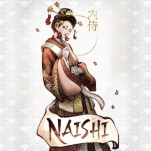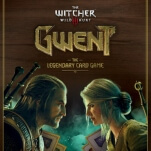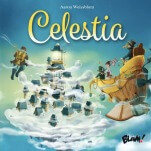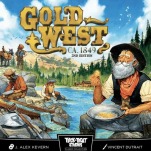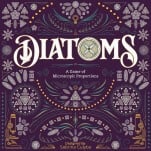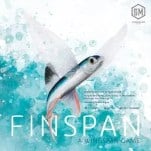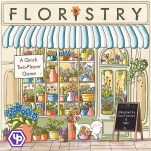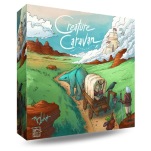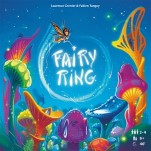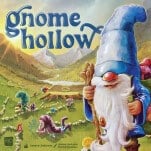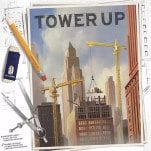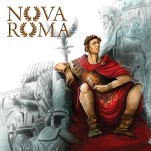Algae Becomes Art in the Board Game Diatoms
Photos courtesy of Ludoliminal Games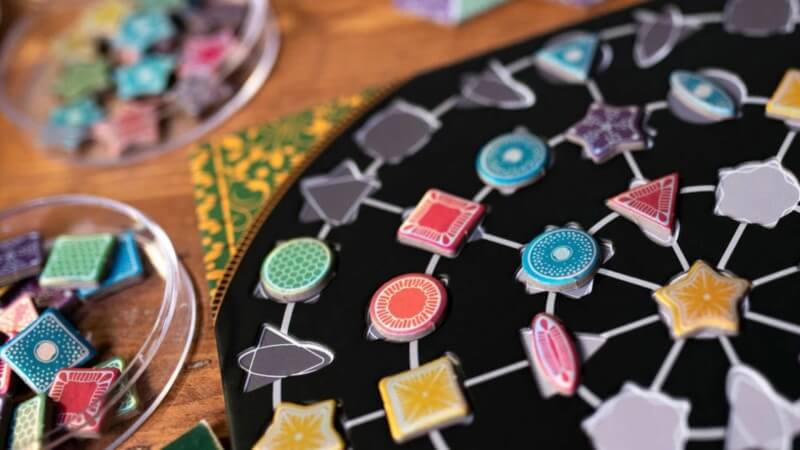
In Victorian England, a very curious art form flourished: making intricate patterns from the microalgae known as diatoms, single-celled organisms that range from five microns (or .005 millimeters) to 200 microns and that have colorful cell walls made of silica. That gives them a jewel-like appearance, and intrepid artists would use their varied shapes and colors to create detailed designs. These artworks were invisible to the naked eye, comparable to the proverbial angels dancing on the head of a pin, except for the whole not-existing part. (If you know about diatoms now, it’s probably because you bought their fossilized remains for your garden in the form of diatomaceous earth, which can help condition the soil and maybe kill a slug or two.)
Diatoms the board game draws on this now-extinct tradition, where players will collect diatoms in five shapes and five colors and try to create patterns on their personal boards to match the three base criteria and perhaps another criterion from a ‘guest’ judge, who may be chill or persnickety, depending on the challenge you want. It’s a satisfying game that works in a competitive aspect in how you gain those diatoms, although I found I wanted it to go just a little longer.
The game play in Diatoms couldn’t be simpler: On your turn, you play a hexagonal water tile to the center of the board, making sure all edges match where adjacent to hex tiles already on the table. You then look at any complete intersections you’ve created to see what diatoms you get, based on the colors of the six triangles that meet at the new vertex. (It’s easier to see than it is to explain, I promise.) The diatoms come in five shapes, and you get diatoms matching the color and the number of triangles touching that vertex. If you create an intersection surrounded entirely by one color, you’ll draw two diatoms whose sizes add up to six. In most turns, you’ll end up with two or three diatoms for your troubles, but it’s possible to gain just one (usually a star, the largest size) or to gain four or even more if you create two vertices with your tile placement.
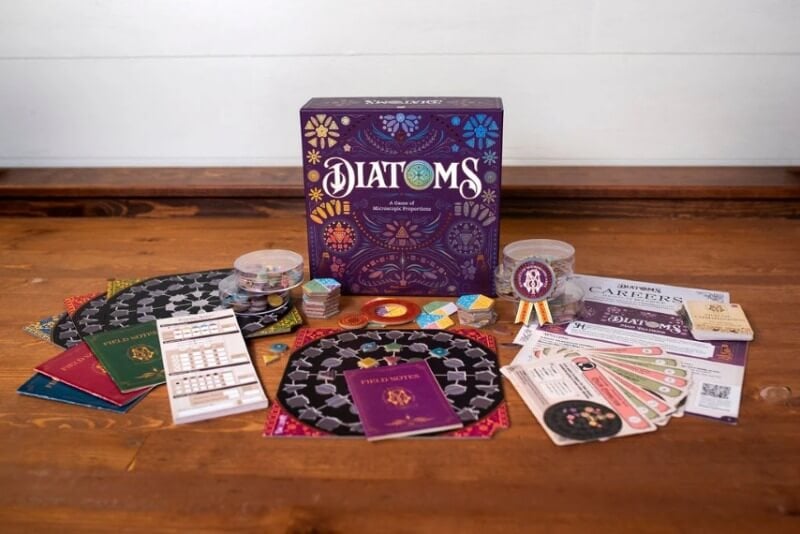
-

-

-

-

-

-

-

-

-

-

-

-

-

-

-

-

-

-

-

-

-

-

-


